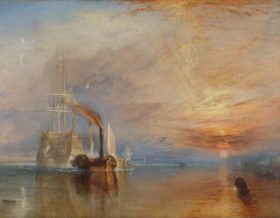Using objects, artworks and other sources to find out about the past
This guide is applicable for all age groups, you can download a free, printable PDF version here.
Using a range of sources to find out about the past is an important part of students’ history learning. Objects, paintings, letters – even songs – can all be useful records of people or events of the past. Looking closely and exploring them in detail develops students’ enquiry and critical thinking skills as they learn about different historical periods, themes and topics.
The images in our collection can be projected onto whiteboards, viewed on computers and tablets or printed out for students to explore in more detail. Use these questions to help students look closely and explore further, older students can begin to develop and answer their own questions as part of their enquiries:
Golden rule for teachers: keep curiosity and motivation alive by not revealing what an object is or the answers to pupils’ questions (if you know them) until the end of their investigation. Do prompt with further questions though…
Objects
- What colour is it?
- What do you think it’s made from?
- Might it make a noise?
- What would it feel like if you could touch it – light/heavy, rough/smooth, warm/cold?
- What might it smell like?
- Who was the maker?
- What was it made to do?
- Who was it made for?
- Are there any moving parts?
- Is it decorated?
Then:
- What is it?
- Why was it revolutionary? How did it change people’s lives?
Paintings, drawings and cartoons
- Look very closely at the whole image, including all four corners. Describe what you see.
- What do you think is happening in the picture?
- Are there any people in the picture?
- What are they wearing?
- What do their clothes tell you about them?
- Can you see the expressions on their faces? What does this tell you?
- Are they holding anything?
- If you could step inside the picture what do you think you might hear, smell, feel, taste?
- What might have happened just before the scene in this picture? What might have happened afterwards?
- Who is the artist?
- How did the artist make this picture?
- Why do you think the artist made this picture?
Older students could consider the following when using paintings, portraits, sculptures and other artworks as sources:
- Who commissioned the artwork? What message did they hope to tell? How might this affect the artist’s choices?
- Who was the intended audience for the artwork? Was it widely viewed or could just a few people have access to it?
- How might the intended audience affect the piece produced? Is the image made to flatter the sitter in a portrait, provide a particular commentary (perhaps biased) on a key event?
- Was the artist of a painted image present at the time of the event they have documented? Is it possible that they may not have met the person or witnessed the event they are being asked to paint? How does this affect the image’s meaning?
- What does this artwork say about revolution?
Is it a reliable source?
Unlike many other artefacts and records, artworks, such as paintings and portraits, need to be used with particular care as sources – they are not always reliable. The artist may have been asked to create a particular impression of a place or person, might not have been present at the time of an event or ever seen the very thing they are being asked to paint. Although considered the best painter of animals of his day, George Stubbs never saw the Kangaroo he famously painted in 1772 to show Europeans what they looked like – he never even went to Australia! Find out more about the ‘Kongorou’ here.
Try these activities to explore objects and artworks further
Useful links
The National Portrait Gallery has more on using portraits as sources for historical enquiry.
The National Gallery has this guide to reading paintings.


